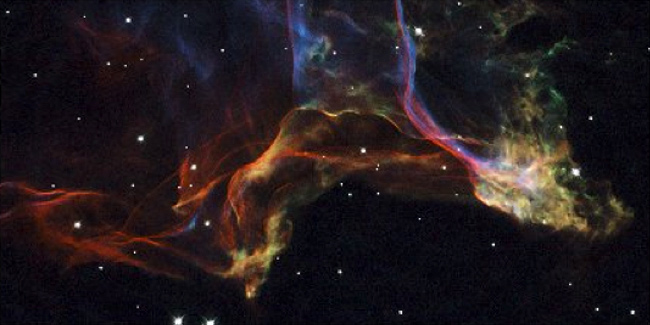
Source: NASA Hubble Telescope, ESA and the Hubble Heritage

Source: NASA Hubble Telescope, ESA and the Hubble Heritage
| Gases are universal, as can be seen from the image of a gas nebula seen by the Hubble Space Telescope. All gases are real, but what makes them Ideal? Real gases have mass and volume. After all, they are made of atoms and molecules like all matter. They bounce off each other and the container in which they are being held. The force of the bounce is what we measure as the pressure inside the container. Just like all things that bounce, real gas molecules lose some of their energy to the sides of the container they hit, and even to other molecules when they collide. Volume is determined by the size of the container, and temperature is the average kinetic energy of the particles in the container. Ideal gases follow the Ideal Gas Law. That means, that in an ideal gas, it does not matter how closely packed in the molecules of the gas are, they do not interact with each other (don't become a liquid or solid). It also means that they do not lose energy when they collide with each other or the container, and they basically have no volume, their molecules are just points with no density. Do any gases actually act like these "Ideal" gases? You probably said "No!" and you are correct. So why do we have to learn this? As a gas becomes less dense, either hotter, lower pressure, and/or increased volume, the more it acts like an "Ideal" gas. So, if we know pressure, temperature, and volume, we can use the Ideal Gas Law to do stoichiometry problems involving gases and obtain very realistic answers. |
![]() Your turn! Place the characteristics from the list into the Ideal Gas or Real Gas column, based upon your understanding of the differences.
Your turn! Place the characteristics from the list into the Ideal Gas or Real Gas column, based upon your understanding of the differences.